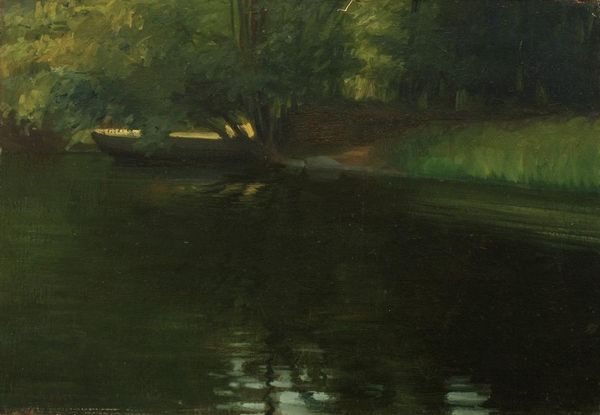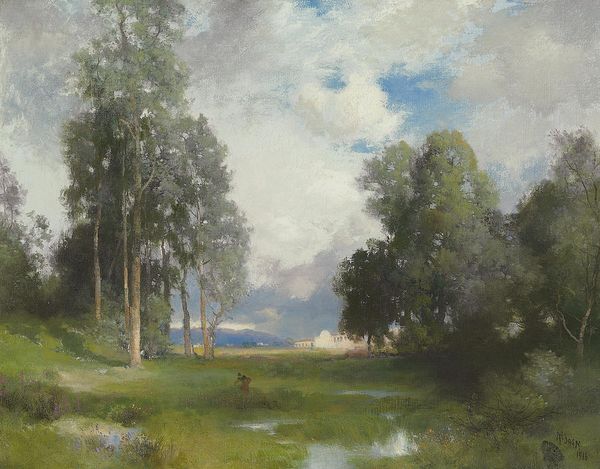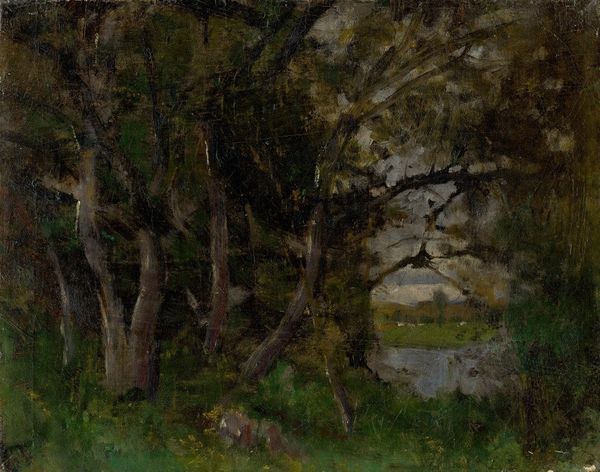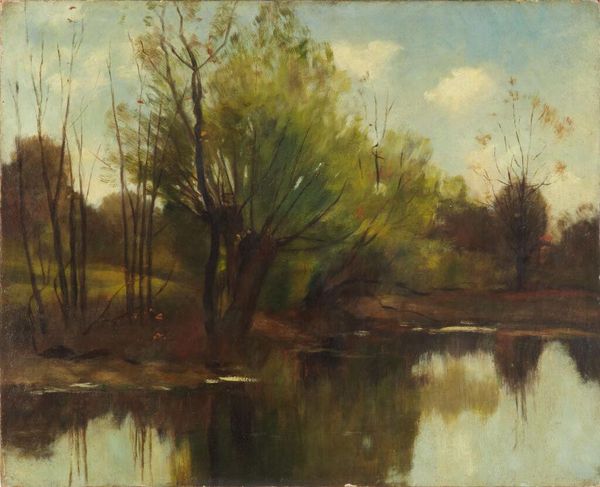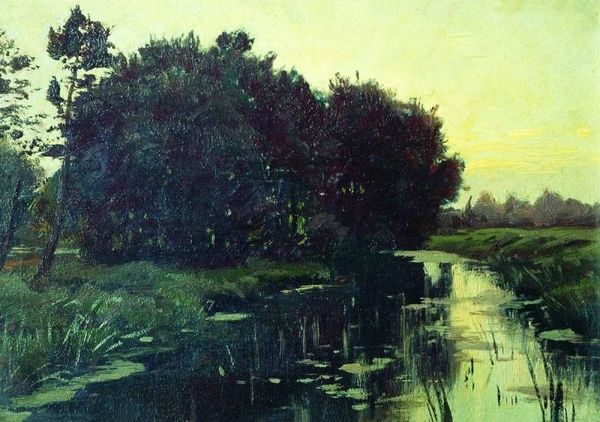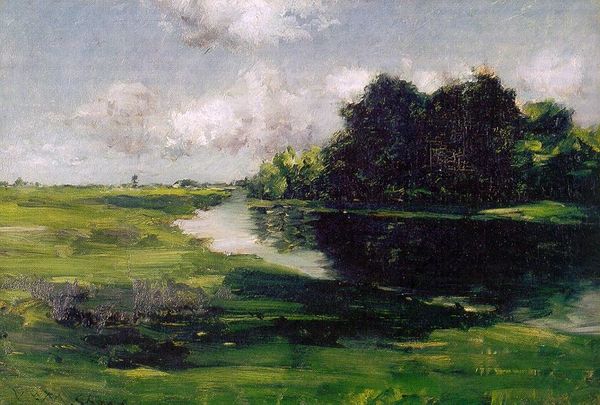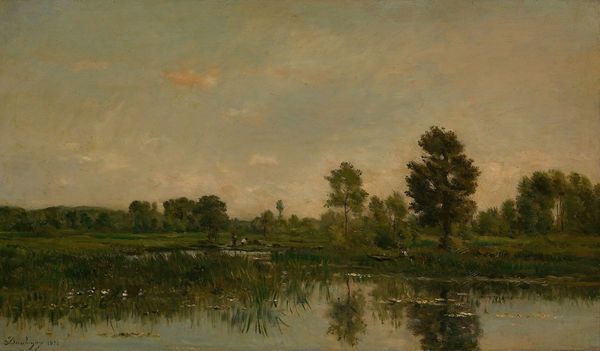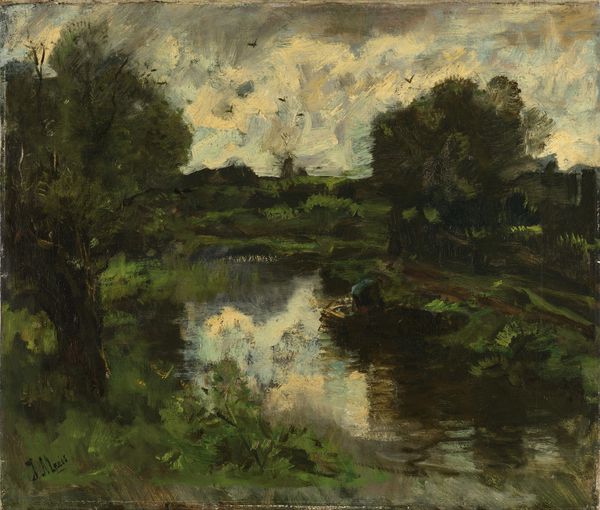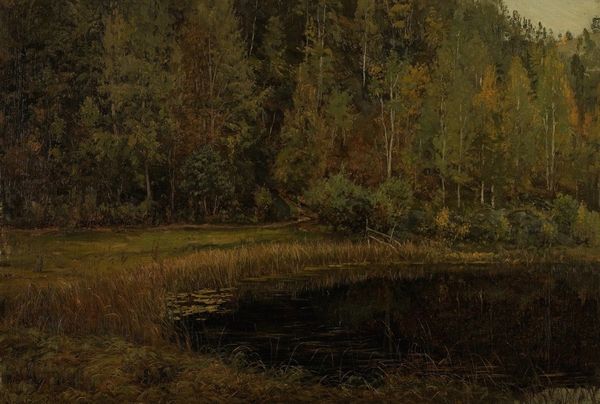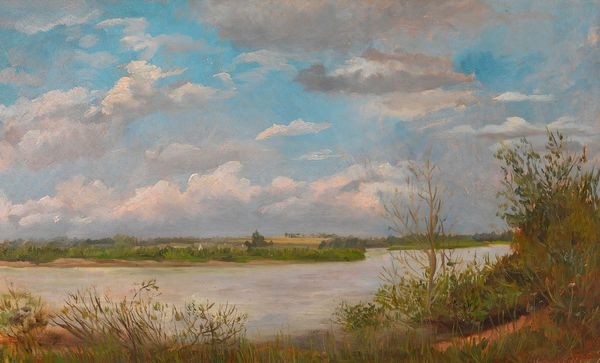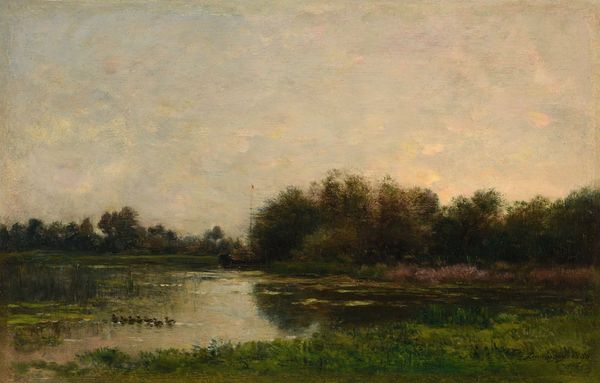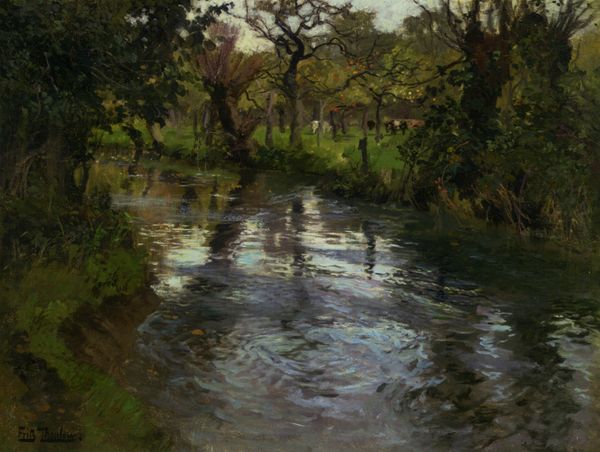
Dimensions: 17 1/2 x 23 3/4 in. (44.45 x 60.33 cm) (canvas)23 1/2 x 29 7/16 x 1 in. (59.69 x 74.77 x 2.54 cm) (outer frame)
Copyright: No Copyright - United States
Editor: So, this is Alexis Jean Fournier’s "After Rain" from 1897, created with oil paint, currently residing at the Minneapolis Institute of Art. It feels so lush and green, but almost muted, subdued, reflecting a very quiet, almost secretive corner of the world. What draws your eye when you look at it? Curator: I am immediately drawn to the tension between the surface’s impasto and the overall atmospheric quality of the landscape. Notice how Fournier’s brushstrokes, while visible, don't distract from the holistic representation of the scene, thus creating a textured field which gives the impression of dampness. The application of colour isn't blended so much as layered, allowing us to read both depth and immediacy, a palpable sensory engagement with the depicted location. How do you interpret the effect of light within the composition? Editor: It is mostly shadowed; there’s that small section reflecting light towards the bottom. So, it seems like the light kind of peeks out selectively; it’s less about a full sunny landscape and more about the subtle play of light in a damp, shady place. It’s a kind of contrast, between light and shadow and between rough texture and subdued palette that create an overall effect of harmony. What kind of statements might the formal qualities be making? Curator: Well, think about how Fournier uses contrast, especially through the juxtaposition of texture and color to structure our visual engagement. How is he suggesting a feeling or narrative without reverting to easily identifiable, historical and symbolic rhetoric? The muted tones evoke a sense of introspection, but they aren’t directly interpretable beyond the impression of being inside the work itself. We are not just observers, we are participants. What could you extract from it then? Editor: Thinking about what you're saying about visual structure and tactile impressions, I notice that while there’s very little implied narrative or symbolism here, its intense visual feeling gives an experience with its own integrity and depth. It really makes me appreciate what you can say about a painting just through analyzing its surface! Curator: Exactly! Formal qualities aren’t merely decorative; they are compositional structures which work together to forge meanings, affect mood, and instigate visual impact on us as viewers.
Comments
No comments
Be the first to comment and join the conversation on the ultimate creative platform.
